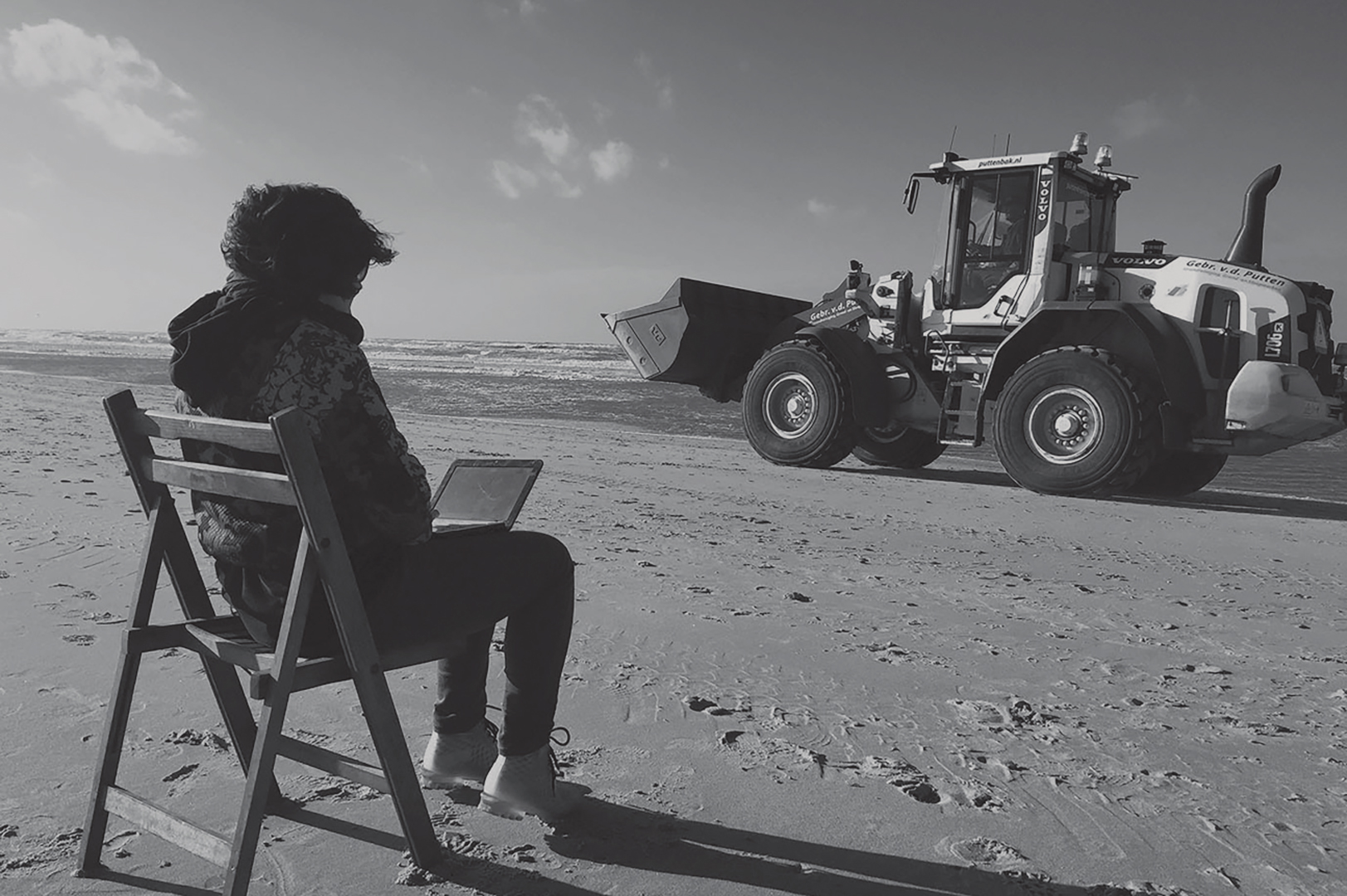“Talking Spaces” by Emma Danch
Title:
- Talking Spaces
Artist(s) and People Involved:
Exhibiting Artist(s):
Symposium:
- ISEA2016: 22nd International Symposium on Electronic Art
-
More artworks from ISEA2016:


Creation Year:
- 2015
Medium:
- Improvisation with situational audio recordings
Artist Statement:
Talking Spaces is a site-specific sound performance series in which situational audio recordings are converted into an improvised sound performance in public space. Through this performance series, the artist seeks to draw attention to the inseparable sonic bond between listener, space, and performer during performance, as well as between listeners and the fascinating sound environments embedded in their daily lives. With a microphone, audio of the space is periodically recorded. Recordings are processed to varying degrees and arranged into improvised music with a digital audio workstation and MIDI controller. The resulting sound, expelled from a speaker, blends with the natural sound environment, overlaying it with a modified version of itself. Each performance is totally unique, since its only materials are situational recordings gathered during the performance. This performance series is strongly tied to Sound Walks and Land Art. During a Sound Walk, the goal for participants is simply to listen to the sounds of the environment.
However, in addition to surrounding environmental sound, participants almost certainly make sound themselves by moving throughout the space, for example with their breath, footsteps, or clothing. Thus, the two seemingly separate entities of human and environment become sonically intertwined. It is a goal of this performance series to generate a similarly meditative and socioenvironmentally adhesive sensory experience for the performer and listener alike. Talking Spaces can not exactly be considered a “Sonic Land Art,” since its compositions are not comprised of natural materials but recordings of natural materials. However, like Land Art, performances are site-specific, derive their materials from the environment or public space, and position in/on that space an artwork which resembles but redesigns it in the aesthetic of the artist. Also, the two are ephemeral and sometimes created within the solitude of remote locations, preserved and viewed by third parties only by way of documentation. A passing pedestrian who sees audio equipment connected to speakers in public will likely assume it marks the presence of a street performance. Because conventions of sound or music performance command or suggest attention to the performed sound, the conversion of recordings of the surrounding environmental sound into a musical performance thus draws attention to listeners’ surroundings.
As a street performance in public space, the absence of a stage or rows of chairs for audience seating removes the conventional notion of separation between audience, performer, and venue. Instead, listeners may feel free to approach the performer and experiment making sounds into the microphone or even to engage in conversation with the artist. A Talking Spaces performance is comprised of three basic components: Electronics, Environment, and Performer. The electronic element of the performance is essential in that it facilitates the capturing, processing, and performing of digital audio. The quality and character of the sounds entering and exiting the devices depends on the quality and character of the equipment. While, in field recording, attempts are often made to prevent extensive sounds associated with the word “noise,” such as wind, feedback, or low fidelity, these qualities might instead be appreciated as a compositional contribution of the equipment to the performance. Other compositional elements affected by electronics include structures and processes within the digital audio workstation as well as effects featured on the speaker(s) or guitar amp(s) used to project the performed sound. The audio equipment as objects also provides visual cues to the audience. A microphone pointed away from the performer suggests environmental input and possible audience participation, should members decide to approach the microphone. The environment, of course, provides the sound material to be recorded and processed. The natural environment as a system of dynamic and everchanging patterns provides a generative compositional contribution to the performance.
Additionally, the visual appearance of the environment connects sampled sounds to their origins as physical events, which offers some transparency to audience members regarding the performance process. A performance in public space which draws attention to its dynamic sonic presence consequently draws attention to its visual presence as well, encouraging listeners to become active viewers of their environment. The performer’s role in the performance has much to do with awareness. As with a musician playing in an ensemble, listening, adjustment, and reaction are required of the performer, who decides the amount of sound and the character of sound to add to the pre-existing musical texture. Other fundamentally human qualities contributed by the performer for this project include personal musical tastes or influences, emotional expression, skill level, mood, sense of humor, and so on, all of which affect the musical composition of the performance. Though the project’s configuration provides some constraints, compositional possibilities are seemingly endless. DAWs enable field recordings to be manipulated and arranged quite elaborately, even during an improvisation. Depending on the physical controls featured on the MIDI controller in use, the performer has access to varying degrees of tactile expression, though digital options on the DAW can sometimes compensate. This particular artist happens to be heavily influenced by the textures and compositional arcs of large-scale symphonic works and techno alike. Decisions must be made, however, with the environment in mind. Thin textures sometimes subtly obscure the distinction between environment and performance, while, in contrast, heavy effects and mechanized repetitions can quite starkly distinguish the two from each other. This artist prefers to strike a balance and, perhaps most importantly, at the end of the performance, to leave the audience wondering if it’s over.







